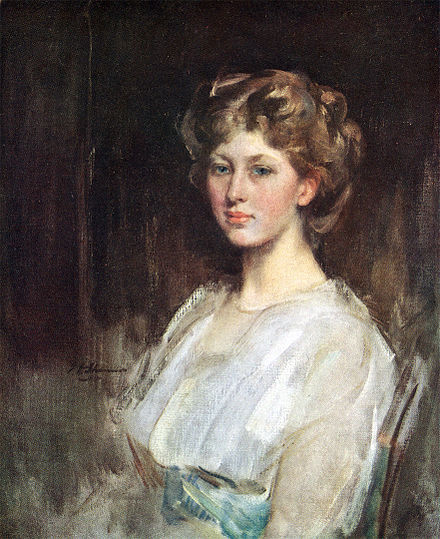The Providence (Row) Night Refuge was founded in 1860, and heavily supported by Alfred Purssell, and his children, and sons-in-law almost from its foundation. Wilfrid Parker, Alfred Purssell’s son in law, was chairman of the committee in 1931, Wilfrid’s nephew George Bellord was also on the committee. George’s father, Edmund Bellord (Agnes Purssell’s husband) had also chaired the committee. Frank Purssell had also been on the committee, and deputised for his father at times.

In the course of its seventy years’ history the Providence (Row) Night Refuge has several times had the honour of welcoming members of the Royal House within its walls. The Prince of Wales visited the Refuge about four years ago; and on Friday last week Princess Mary presided at the annual Founder’s Day celebration, the third princess to accept the performance of that function; her Royal Highness’s predecessors were Princess Alice of Athlone, who presided in 1913; and Princess Marie Louise, in 1924. Founder’s Day at Crispin Street is always an occasion for enlisting the sympathy, by presence, of a distinguished chairman; no fewer than eleven Lord Mayors of London, it may be noted, and five Chairmen of the London County Council, have been among those presiding in past years. This year, the visit of Princess Mary gave added distinction to the occasion, and the present Lord Mayor, Alderman Sir William Phene Neal, attended among those who welcomed Her Royal Highness and expressed their welcome in words. With the Lord Mayor were the Bishop of Cambysopolis, representing His Eminence the Cardinal Archbishop; Viscount FitzAlan, the senior trustee of the charity; Alderman Sir Harold Downer, K.C.S.G.; Sheriff Collins ; the Mayor of Stepney (Mr. M. H. Davis, L.C.C.); Captain W. W. Parker, M.B.E., Chairman of the Committee; Sir John Gilbert, K.C.S.G., K.S.S., Secretary; Adele Countess Cadogan, and others.
Her Royal Highness, attended by Miss Dorothy Yorke as Lady-in-Waiting, took the chair. A bouquet was presented by Bona Leather, of St. Aloysius’ Secondary School, Clarendon Square, N.W. The speeches followed. First of all the Lord Mayor, expressing gratitude to the Princess for the honour of her presence, extolled the work of the Night Refuge and commended as an example the action of market workers in the City who had subscribed fifty pounds to its funds. Lord FitzAlan associated himself with the words of welcome ; and the Bishop, who followed, remarked, as representing the Cardinal, that His Eminence, in whose name he thanked Her Royal Highness for honouring the institution, took a deep interest in that as in all other good works in the Archdiocese. His lordship referred also to the beneficent labours of the Sisters of Mercy at Crispin Street, labours, he said, which included work that in its result often meant more than the value of food and shelter to the poor and needy who sought the Refuge. Monsignor Butt was followed by Sir John Gilbert, who briefly related some salient facts and figures in connection with the work, as, for instance, that since 1860 the Refuge has provided nearly 2,600,000 free nights’ lodgings, and 5,200,000 free meals, upon an organization plan aimed at securing the benefits of the deserving.
Princess Mary and the other guests afterwards paid a visit to the various parts of the Refuge. They found everything in its customary’ order ; the inmates for the night had been admitted as usual at five o’clock, and the only circumstance marking the rejoicing for the visit of Her Royal Highness was a special meal, provided by an anonymous benefactor and more satisfying in its character than any banquet of cakes and ale.
The valuable link between the Home and the Corporation of the City of London may be noted from an examination of the charity’s list of officers in the annual report. Sir John Knill, treasurer and a trustee, was Lord Mayor of London, 1909-10; Sir Henry T. McAuliffe, a trustee, has served for many years upon the Common Council and is Deputy-Alderman for Bishopsgate; Sir Harold Downer, a member of Committee, was Sheriff in 1924 before his election last year as Alderman for Coleman Street Ward. Similarly, an extensive “second generation” of workers for Monsignor Gilbert’s institution will be recognized. Sir John Knill’s offices were formerly held by his father, the late Sir Stuart Knill, London’s first post-Reformation Catholic Lord Mayor; as mentioned above, Captain W. W. Parker, son of the late Sir Henry Watson Parker, a well-known City lawyer, fills the chair of the Committee, as did his father-in-law, the late Mr. Alfred Purssell, a former member of the Corporation and the great personal friend of the Founder ; Mr. George Bellord has succeeded his father, the late Mr. Edmund Bellord, thirty four years a member of Committee and twenty-six years its chairman ; Mr. Joseph Towsey joined the Committee upon the death of his father, the late Mr. William Towsey, an original member with a record service extending from 1860 to 1926; Mr. J. Arthur Walton is the son of the late Hon. Mr. Justice Walton, a trustee for many years. Finally, Sir John Gilbert, a nephew of the Founder, will this year complete thirty-five years’ work as Secretary.
Princess Mary has had a letter sent to Sir John Gilbert expressing her deep interest in all she saw at the Refuge. Her Royal Highness wishes to show that interest by a grant from Queen Mary’s London Needlework Guild.
The above text was found on p.22, 2nd May 1931 in “The Tablet: The International Catholic News Weekly.” Reproduced with kind permission of the Publisher. The Tablet can be found at http://www.thetablet.co.uk .